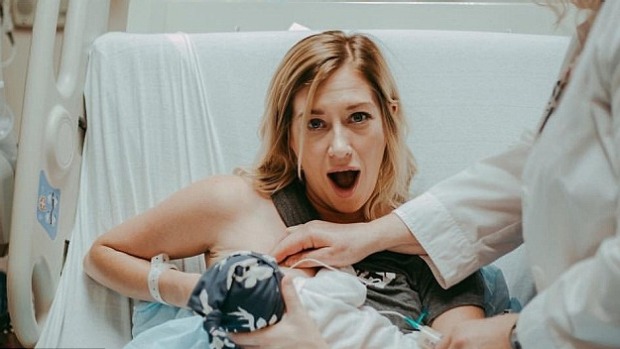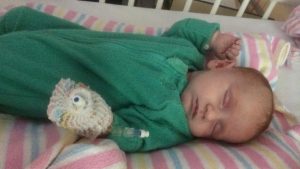Breastfeeding isn’t always as easy as it seems.
And Ashley Rockhill, a mum from America, discovered that for herself after giving birth to her baby boy, Ace.
“After two days of attempting to get him to latch on and multiple times of squeezing out what colostrum I could get for him, I was beyond exhausted and frustrated,” she told the Daily Mail
It was then that Ashley sought the help of a lactation specialist. With her help, Ace finally started feeding.
Ashley was lucky enough to have her birth photographer, Aleaze Jeavons, on hand to capture that precious moment.
“‘This moment that is captured was the first time I had got him to latch on. I couldn’t believe it. I was so relieved,” said Ashley.

About an hour before, I was in tears because I wanted to give up.
“It really is an amazing experience.”
Ellie, a 28-year-old mum from Western Australia, remembers that feeling well.
She was determined to breastfeed her baby boy Oliver, but struggled right from the start.
While Oliver seemed to latch properly, Ellie soon developed cracked, bleeding nipples. Oliver then became fussy and would take “hours” to feed.
When Oliver was diagnosed with a tongue-tie – and then had it snipped – things improved dramatically.
Ellie recalls the immense relief and joy she felt when “everything seemed to click” and Oliver began feeding properly.
Amanda Bude, a midwife from Groovy Babies, says it’s common for women to feel elated when their baby finally starts feeding, especially if it doesn’t come easily at first.
“It’s like winning a gold medal!” she says – because establishing breastfeeding is often far more difficult than mums expect it to be.
Amanda says there are many factors that can contribute to these difficulties.
These include having a complicated delivery, past breastfeeding troubles, and a lack of support.
To combat breastfeeding issues, Amanda says education is key.
Before having your baby she recommends antenatal breastfeeding classes – both for yourself, and your partner.
She also advises seeking support through positive breastfeeding groups on social media, and joining groups such as the Australian Breastfeeding Association.
Amanda says it’s also worth investing in the right size maternity bra and breastfeeding pillows. She recommends having clothes that don’t leave you feeling exposed when you need to feed, and making sure you have some nipple cream and breast pads on hand.
After giving birth, Amanda says it’s key to have those first 60 minutes after delivery “undisturbed” to set you up for a positive breastfeeding experience.
“The first breastfeed is like the imprint or blueprint for a baby’s breastfeeding career,” she explains.
“If that ‘glue’ sticks correctly, then the baby tends to feed really well subsequently.”
However, she says if there are any issues with that first feed, then that ‘imprint’ can “take a little longer to ingrain”.
In those cases, she says that both mum and baby will need more support and patience to establish feeding.
If you’re having trouble breastfeeding, Amanda recommends seeking help early.
However, she also reminds that it is a skill that can take time to ‘work’.
“Breastfeeding is like learning to dance,” says Amanda.
“Both mum and bub know the steps, but it takes time and persistence to learn the routine.”



